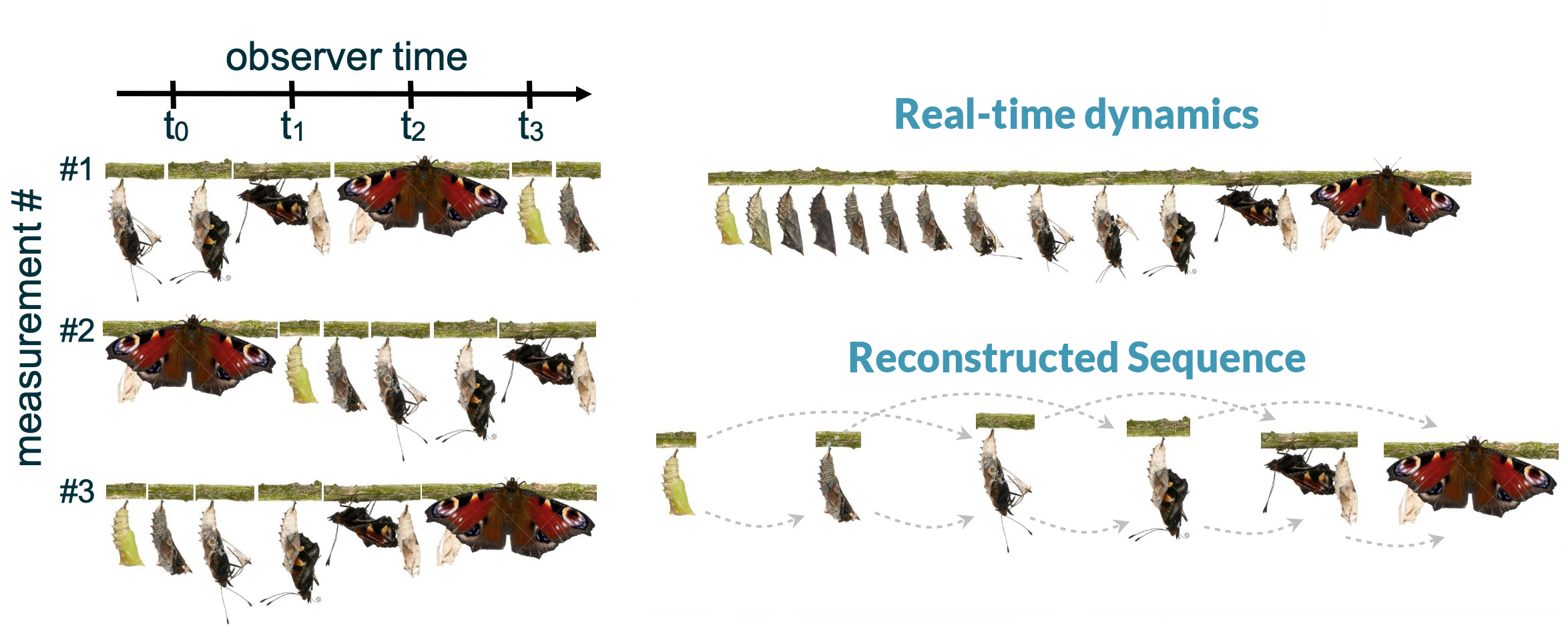Real-time monitoring of chemical dynamics has emerged as one of the most powerful approaches to understanding the electronic and structural behavior underlying chemical transformations. However, most real-time techniques rely on a method in which the dynamics are initiated by a pump pulse, followed by a probe pulse at a variety of different delays to measure the response. This method is, by definition, limited to processes that can be initiated by a well-defined stimulus.
In contrast, most chemistry happens spontaneously, when molecules collide at just the right moment with the right velocities, orientations, and internal energies. “I sometimes use the hatching of a butterfly to motivate the concept of spontaneous dynamics in general, since one has no control over the exact timing of this process,” said Oliver Gessner, a senior scientist in Berkeley Lab’s Chemical Sciences Division.
Now, Gessner and researchers from Berkeley Lab, Technische Universität Bergakademie Freiberg, and Germany’s Center for Free-Electron Laser Science have made an important first step toward monitoring dynamics without a timed trigger. Their technique combines x-ray photoelectron spectroscopy (XPS) with correlation spectroscopy—a statistical method capable of detecting patterns in microscopic fluctuations across space and time. The technique, called time-correlation XPS (TCXPS), was demonstrated and benchmarked against pump–probe approaches at the Advanced Light Source (ALS).
The dynamics of laser-induced surface voltages in silicon were monitored at ALS Beamline 11.0.2, using both pump–probe and TCXPS techniques back-to-back, under virtually identical conditions. Very good agreement was found between the dynamic trends measured directly using both methods.
Mario Borgwardt, a postdoc in Berkeley Lab’s Chemical Sciences Division, performed theoretical simulations that reinforced confidence in the technique’s feasibility. Felix Brausse, also a postdoc in Chemical Sciences, implemented the technique and analyzed the results. Monika Blum, a research scientist at the ALS and in Chemical Sciences, was instrumental in facilitating the experimental campaign.
“Many colleagues from the ultrafast science community were skeptical that the approach would be suitable for capturing dynamic trends,” said Gessner. “Surprisingly, it worked on the first try. At some point, we hope to be able to directly monitor many chemical reactions, such as catalysis, oxidation, material aging, etc., that are out of reach for existing time-resolved techniques.”

F. Brausse, M. Borgwardt, J. Mahl, M. Fraund, F. Roth, M. Blum, W. Eberhardt, and O. Gessner, “Real-time interfacial electron dynamics revealed through temporal correlations in x-ray photoelectron spectroscopy,” Structural Dynamics 8, 044301 (2021), doi:10.1063/4.0000099.